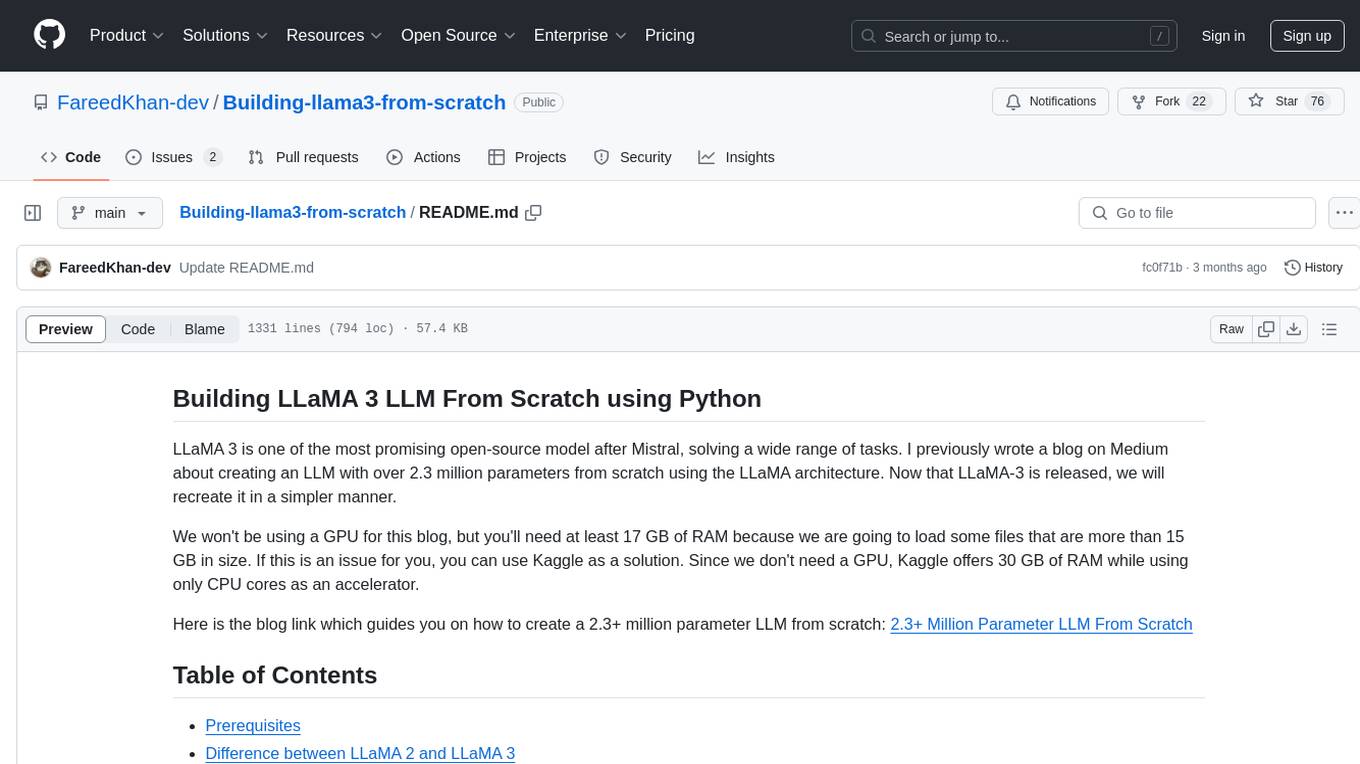
llm-baselines
None
Stars: 58
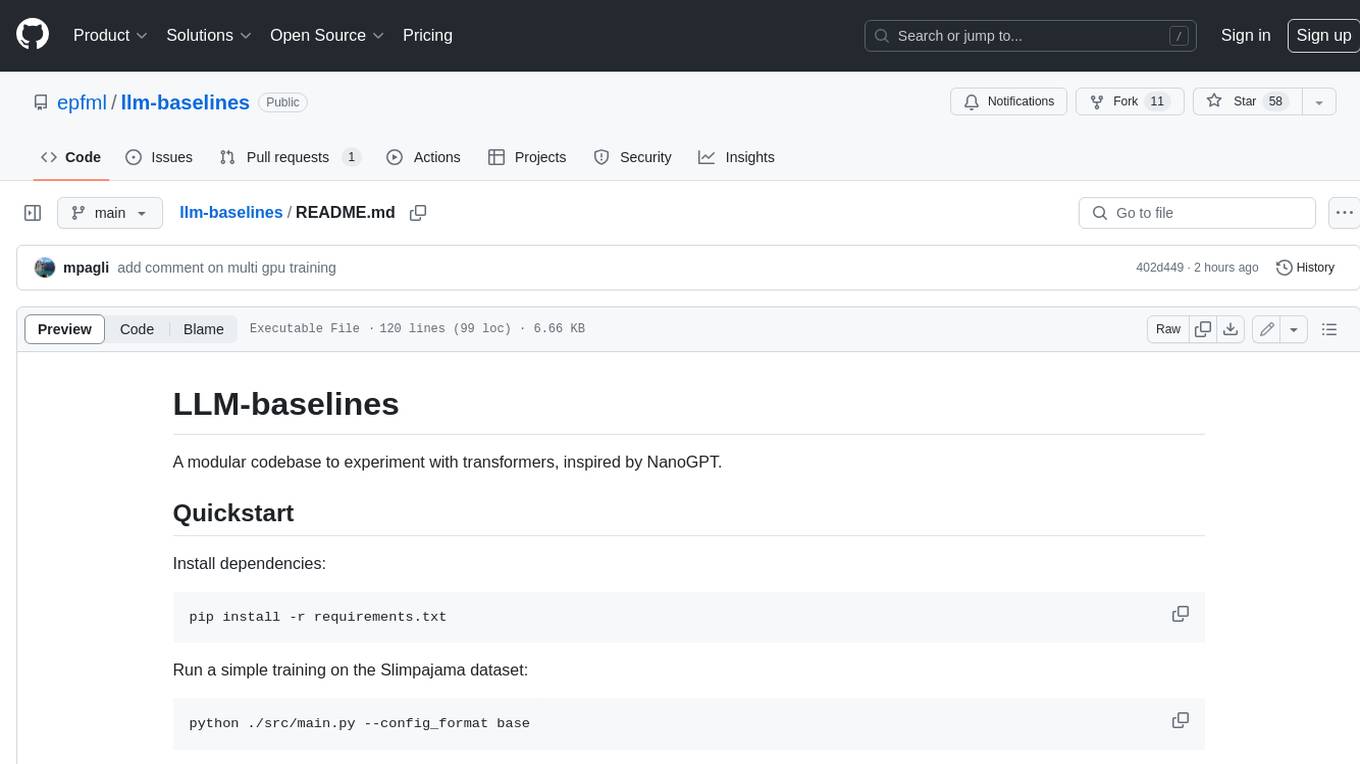
LLM-baselines is a modular codebase to experiment with transformers, inspired from NanoGPT. It provides a quick and easy way to train and evaluate transformer models on a variety of datasets. The codebase is well-documented and easy to use, making it a great resource for researchers and practitioners alike.
README:
A modular codebase to experiment with transformers, inspired from NanoGPT.
Install dependencies:
pip install -r requirements.txt
Run a simple training on the Wikitext dataset:
python ./src/main.py
The above command trains a 213.34M parameters model (see the "Results on wikitext" section for more details). The training takes a bit less than 5h on one 40GB A100. It trains for 15k iterations with a batch size of 50x4 (4 gradient accumulation steps), hence a speed of 0.84 iteration per second, or 86k tokens per second. You should reach a perplexity of around 18.5.
If you don't have so much VRAM:
python ./src/main.py --n_layer 12 --sequence_length 256
If you have very limited resources, try the shakespeare dataset and character-based tokenizer:
python ./src/main.py --n_layer=2 --n_head=4 --n_embd=128 --sequence_length=256 --dataset=shakespeare-char --device=cpu --vocab_size=96
Here are the possible parameters you can use (copypasta from config/base.py):
# General training params
parser.add_argument('--batch_size', default=50, type=int)
parser.add_argument('--acc_steps', default=4, type=int)
parser.add_argument('--seed', default=0, type=int)
parser.add_argument('--device', default='cuda:0', type=str)
parser.add_argument('--iterations', default=15000, type=int)
parser.add_argument('--lr', default=2e-3, type=float)
parser.add_argument('--warmup_percent', default=0.02, type=float)
parser.add_argument('--weight_decay', default=1e-3, type=float)
parser.add_argument('--beta1', default=0.9, type=float)
parser.add_argument('--beta2', default=0.95, type=float)
parser.add_argument('--scheduler', default='cos', choices=['linear', 'cos', 'none'])
parser.add_argument('--opt', default='adamw', choices=['adamw', 'sgd'])
parser.add_argument('--eval_freq', default=200, type=int) # in iterations
parser.add_argument('--results_base_folder', default="./exps", type=str)
# Dataset params
parser.add_argument('--dataset', default='wikitext', choices=['wikitext', "shakespeare-char", 'arxiv', "arxiv2000", "arxiv+wiki", 'openwebtext2'])
parser.add_argument('--vocab_size', default=50304, type=int)
parser.add_argument('--data_in_ram', action='store_true') # force the data to RAM, mostly useless except for openwebtext2
# Model params
parser.add_argument('--model', default='base', choices=['base', 'sparse-heads-q'])
parser.add_argument('--use_pretrained', default="none", type=str) # 'none', 'gpt-2' or a path to the pretraind model
parser.add_argument('--dropout', default=0.2, type=float)
parser.add_argument('--n_head', default=12, type=int)
parser.add_argument('--n_layer', default=24, type=int) # depths in att + ff blocks
parser.add_argument('--n_embd', default=768, type=int) # embedding size / hidden size ...
parser.add_argument('--sequence_length', default=512, type=int)
parser.add_argument('--dtype', default=torch.bfloat16, type=torch.dtype)
parser.add_argument('--bias', default=False, type=bool)
parser.add_argument('--no_compile', action='store_true') # if true then model is not compiled
# logging params (WandB)
parser.add_argument('--wandb', action='store_true') # whether to use wandb or not
parser.add_argument('--wandb_project', default="my-project", type=str)
parser.add_argument('--wandb_run_prefix', default="none", type=str) # is added before the autogenerated experiment name
parser.add_argument('--eval_seq_prefix', default="The history of Switzerland ", type=str) # prefix used to generate sequences
# Distributed args
parser.add_argument('--distributed_backend', default=None, type=str, required=False,
choices=distributed.registered_backends()) # distributed backend typeYou need to give your wandb authorize key in order to send the data to your wandb account. If you start jobs on a server without access to prompt, then you can set the WANDB_API_KEY variable within your script:
# this is a script that could be executed on a server
pip install -r requirements.txt # install req.
export WANDB_API_KEY="put your authorize key here, to find it: https://wandb.ai/authorize"
python ./src/main.py --wandb --wandb_project "my awesome project" --n_layer 7 --model base --seed 123The structure of the project is the following:
src/
main.py # pick the right data, model, and training function
config/
__init__.py # contains CONFIG_FORMAT_TO_MODULE_MAP mapping the name given to the --config_format flag with a python conf file
base.py # config for the base model
sparse.py # config for some sparsehq model
data/
utils.py # contains the get_dataset function
wikitext.py # load/process wikitext
arxiv.py # load/process arxiv
shakespeare.py # load/process the Shakespeare dataset
models/
utils.py # contains the get_model function
base.py # contains the standard transformer base architecture
sparsehq.py # a fork of base.py with a different architecture
optim/
utils.py # contains eval and get_batch functions
base.py # training function for the base model
sparse.py # training function for the sparsehq model
distributed/
# code to enable simple distributed trainingGiven the above structure, to add your own model, you can just fork the ./src/models/base.py file, do your modifications, then if necessary fork the ./src/optim/base.py in case you need some custom training loop or evaluation. You also need to fork the ./src/config/base.py file to add your own parameters, which imply adding your new config to the mapping CONFIG_FORMAT_TO_MODULE_MAP in ./src/config/__init__.py. To add a new dataset, create a new file in the data folder, check wikitext.py for the expected format.
Trying to get the best perplexity as fast as possible, I settled for using a model (213.34M parameters) with the following parameters:
- n_embd: 768
- n_head: 12
- dropout: 0.2 (0.1 also works fine)
- n_layer: 24
- sequence_length: 512
- batch_size: 50
- acc_steps: 4
- iterations: 15000
- lr: 0.002
- warmup_percent: 0.02
The training reaches convergence after a bit less than 5 hours (on one 40GB A100), with a perplexity around 18.5, which I believe to be good for a non-pretrained model. The figure below shows the evolution of perplexity for two models with and without dropout, showing the importance of dropout. It should be possiblee to reach similar perplexity without dropout with a smaller batch size but this would probably extend the duration of the training.
A lighter and faster (12 layers instead of 24) but still very good config on wikitext:
- n_embd: 768
- n_head: 12
- n_layer: 12
- batch_size: 55
- sequence_length: 512
- acc_steps: 3
- dropout: 0.2
- iterations: 15000
- lr: 0.002
- warmup_percent: 0.02
For Tasks:
Click tags to check more tools for each tasksFor Jobs:
Alternative AI tools for llm-baselines
Similar Open Source Tools

llm-baselines
LLM-baselines is a modular codebase to experiment with transformers, inspired from NanoGPT. It provides a quick and easy way to train and evaluate transformer models on a variety of datasets. The codebase is well-documented and easy to use, making it a great resource for researchers and practitioners alike.
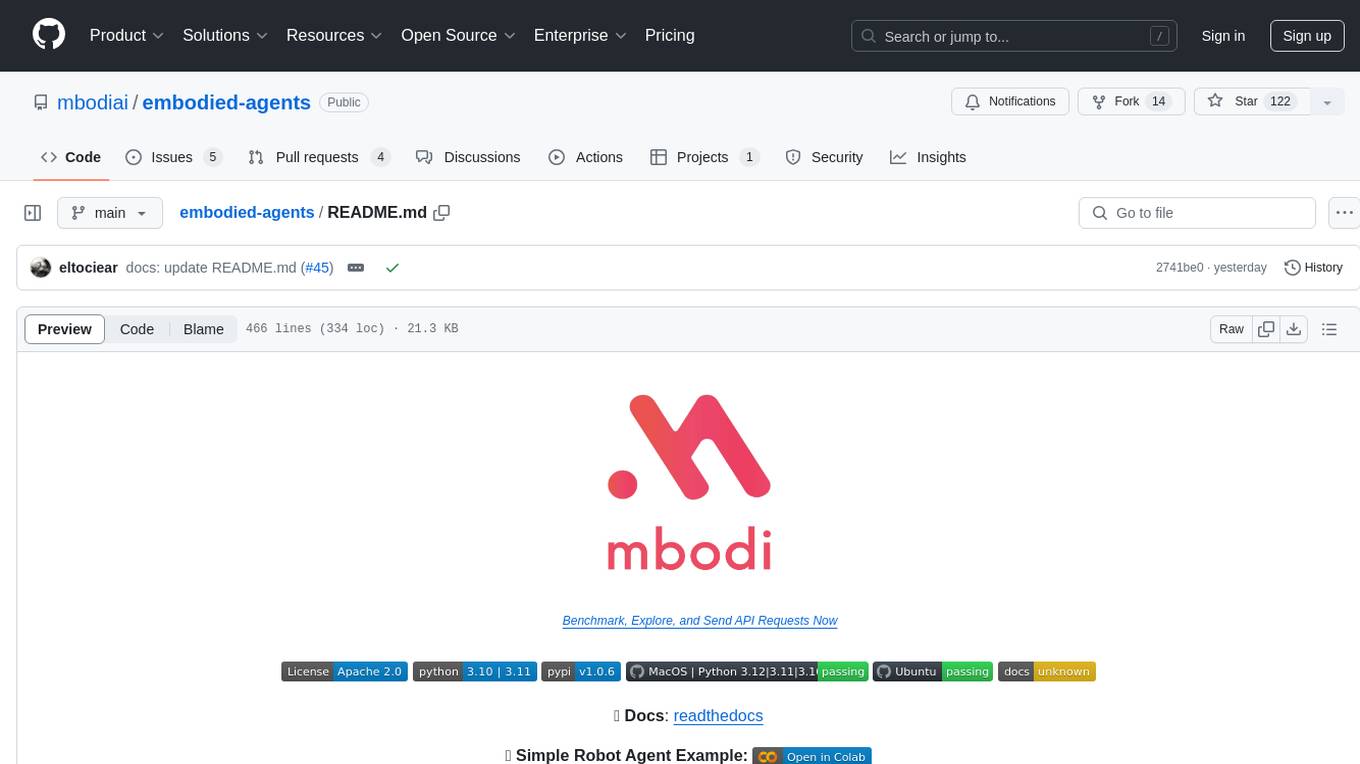
embodied-agents
Embodied Agents is a toolkit for integrating large multi-modal models into existing robot stacks with just a few lines of code. It provides consistency, reliability, scalability, and is configurable to any observation and action space. The toolkit is designed to reduce complexities involved in setting up inference endpoints, converting between different model formats, and collecting/storing datasets. It aims to facilitate data collection and sharing among roboticists by providing Python-first abstractions that are modular, extensible, and applicable to a wide range of tasks. The toolkit supports asynchronous and remote thread-safe agent execution for maximal responsiveness and scalability, and is compatible with various APIs like HuggingFace Spaces, Datasets, Gymnasium Spaces, Ollama, and OpenAI. It also offers automatic dataset recording and optional uploads to the HuggingFace hub.
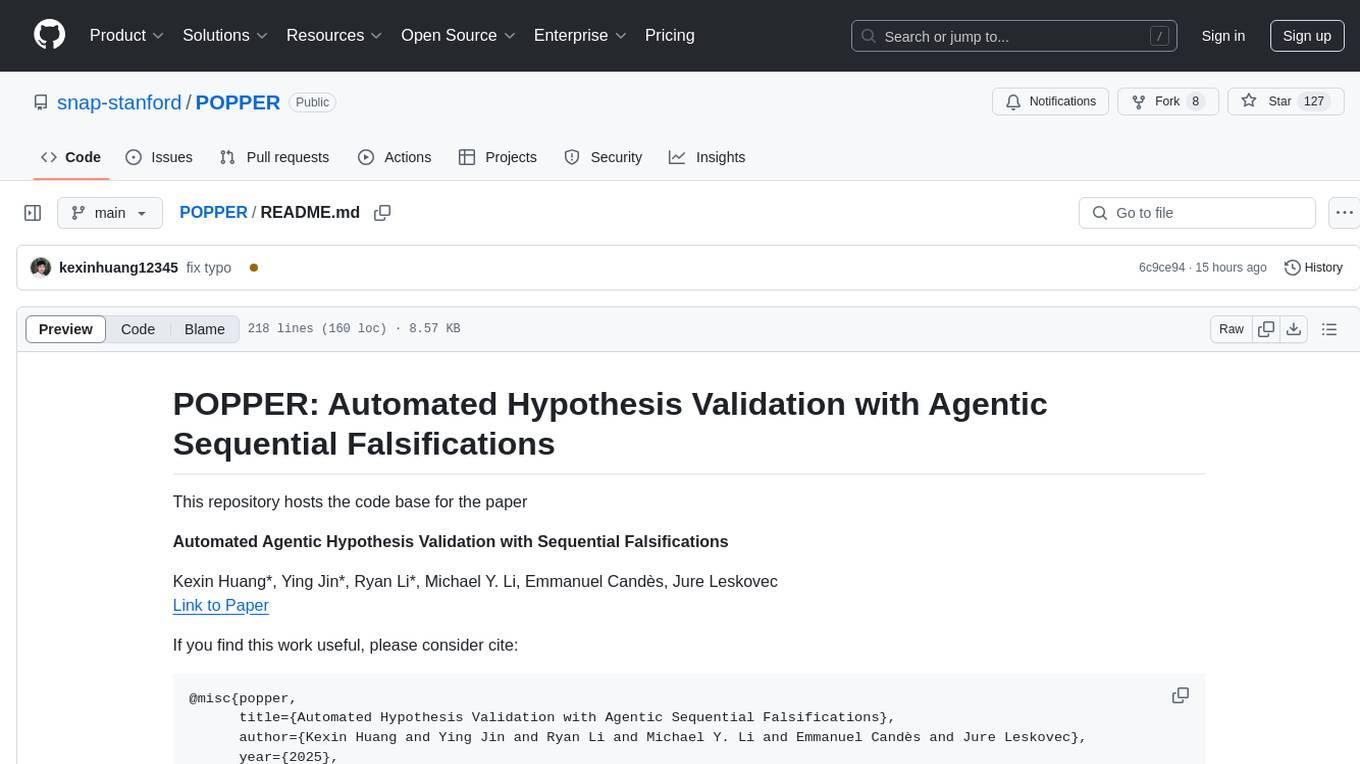
POPPER
Popper is an agentic framework for automated validation of free-form hypotheses using Large Language Models (LLMs). It follows Karl Popper's principle of falsification and designs falsification experiments to validate hypotheses. Popper ensures strict Type-I error control and actively gathers evidence from diverse observations. It delivers robust error control, high power, and scalability across various domains like biology, economics, and sociology. Compared to human scientists, Popper achieves comparable performance in validating complex biological hypotheses while reducing time by 10 folds, providing a scalable, rigorous solution for hypothesis validation.
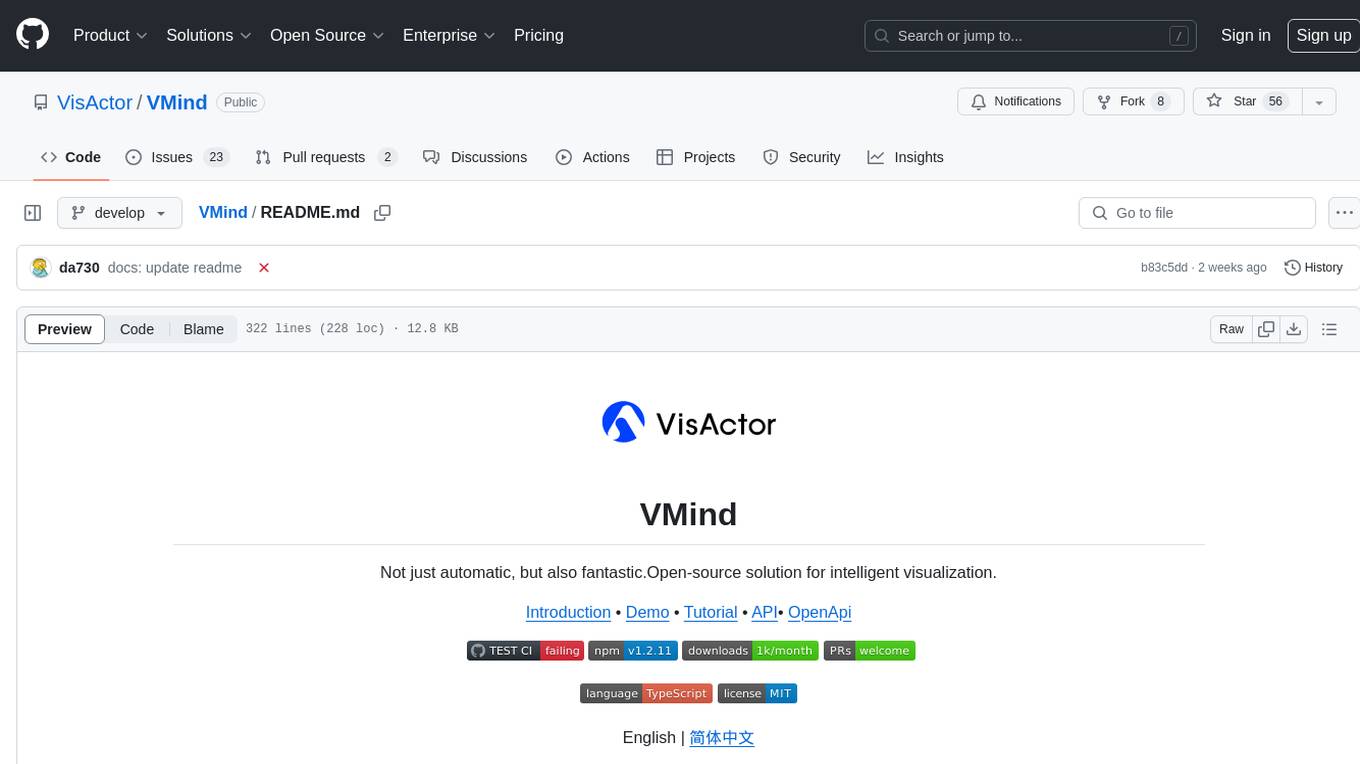
VMind
VMind is an open-source solution for intelligent visualization, providing an intelligent chart component based on LLM by VisActor. It allows users to create chart narrative works with natural language interaction, edit charts through dialogue, and export narratives as videos or GIFs. The tool is easy to use, scalable, supports various chart types, and offers one-click export functionality. Users can customize chart styles, specify themes, and aggregate data using LLM models. VMind aims to enhance efficiency in creating data visualization works through dialogue-based editing and natural language interaction.
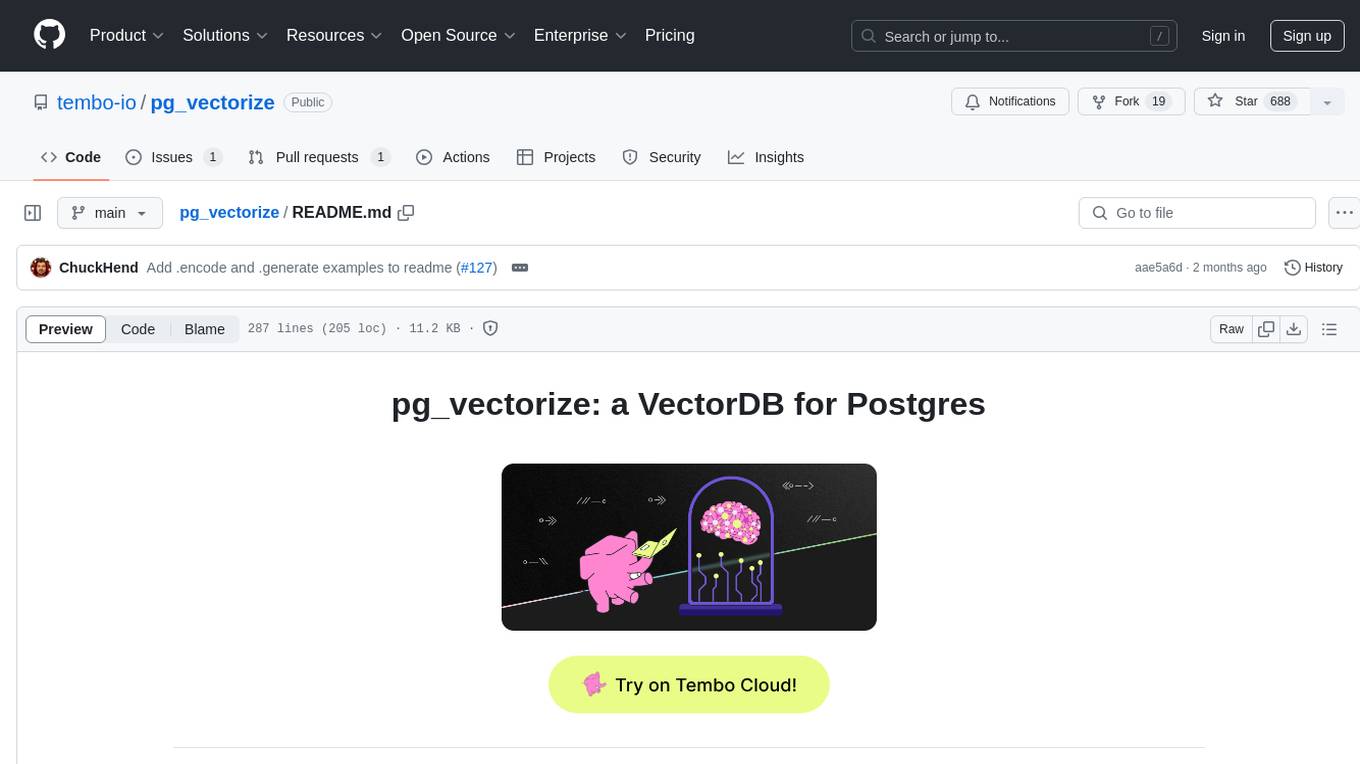
pg_vectorize
pg_vectorize is a Postgres extension that automates text to embeddings transformation, enabling vector search and LLM applications with minimal function calls. It integrates with popular LLMs, provides workflows for vector search and RAG, and automates Postgres triggers for updating embeddings. The tool is part of the VectorDB Stack on Tembo Cloud, offering high-level APIs for easy initialization and search.
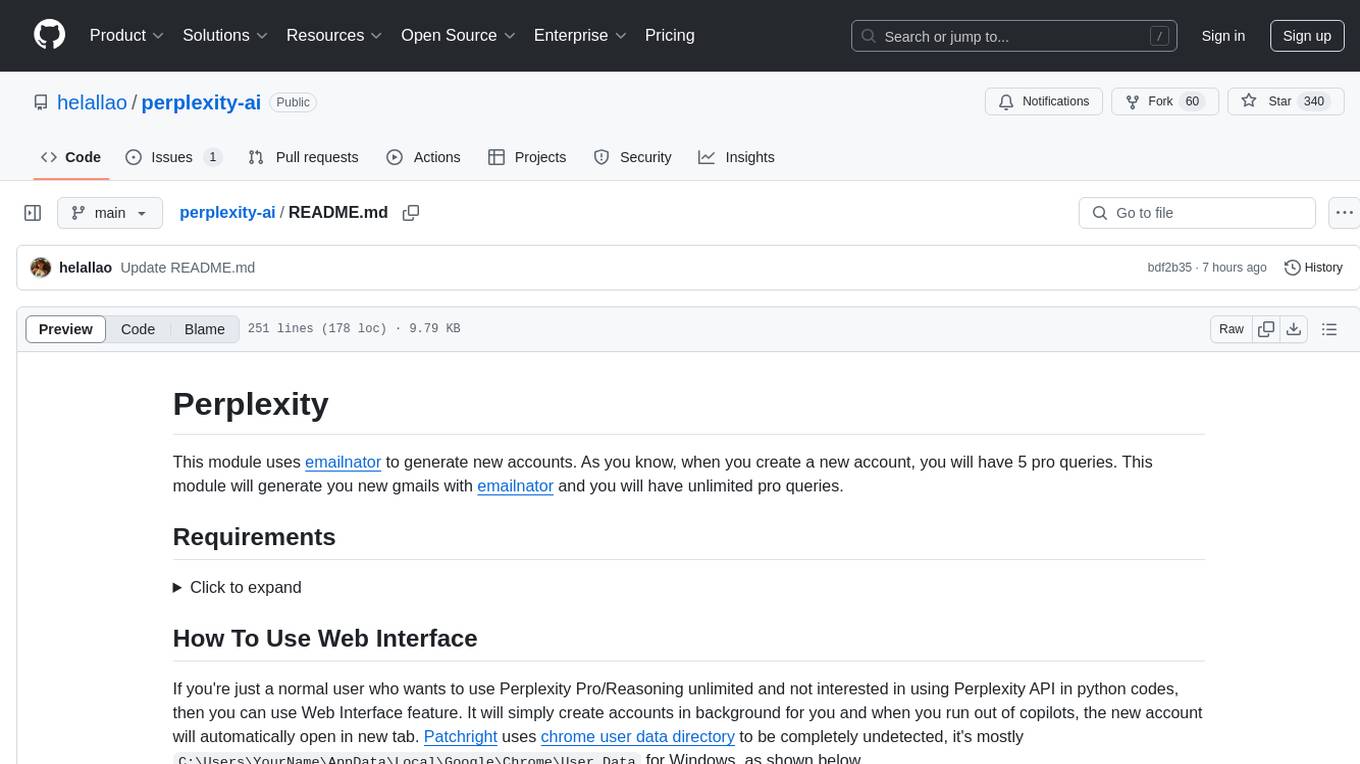
perplexity-ai
Perplexity is a module that utilizes emailnator to generate new accounts, providing users with 5 pro queries per account creation. It enables the creation of new Gmail accounts with emailnator, ensuring unlimited pro queries. The tool requires specific Python libraries for installation and offers both a web interface and an API for different usage scenarios. Users can interact with the tool to perform various tasks such as account creation, query searches, and utilizing different modes for research purposes. Perplexity also supports asynchronous operations and provides guidance on obtaining cookies for account usage and account generation from emailnator.
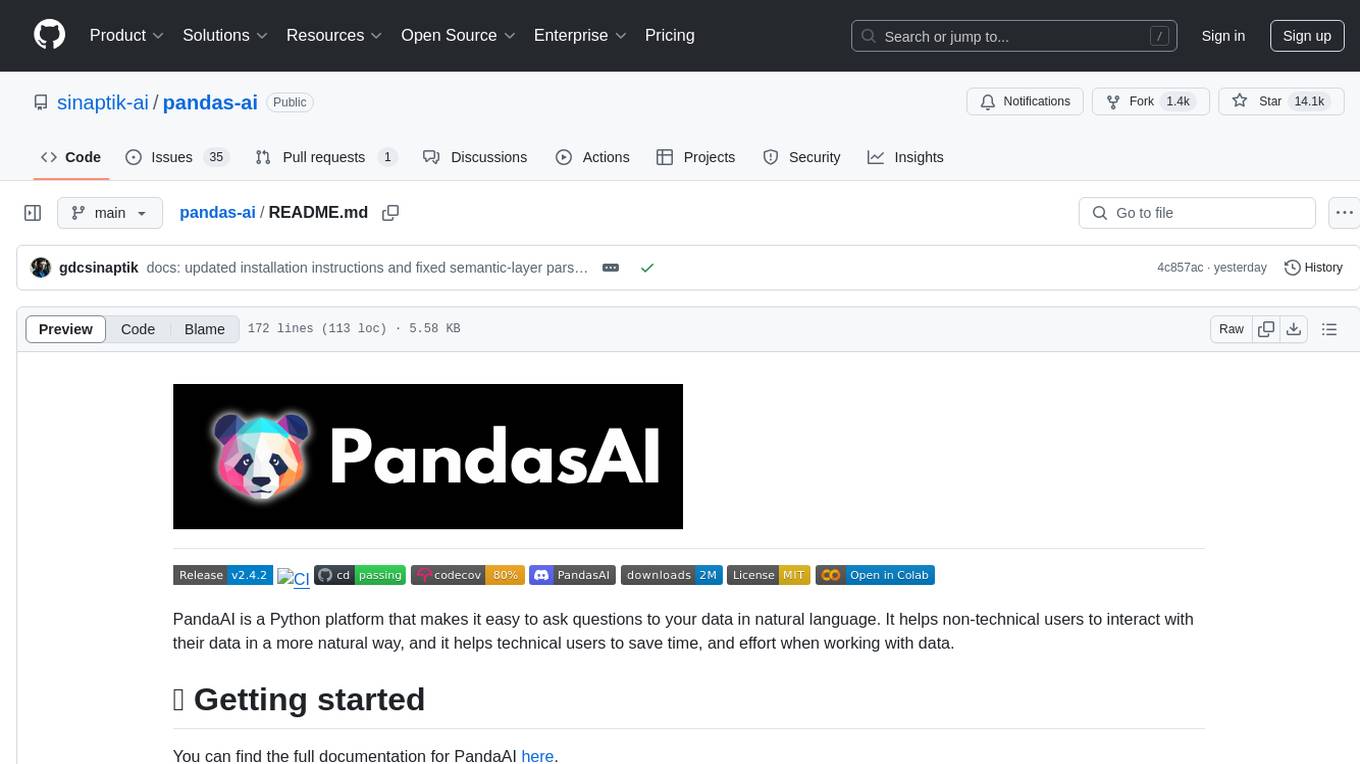
pandas-ai
PandaAI is a Python platform that enables users to interact with their data in natural language, catering to both non-technical and technical users. It simplifies data querying and analysis, offering conversational data analytics capabilities with minimal code. Users can ask questions, visualize charts, and compare dataframes effortlessly. The tool aims to streamline data exploration and decision-making processes by providing a user-friendly interface for data manipulation and analysis.
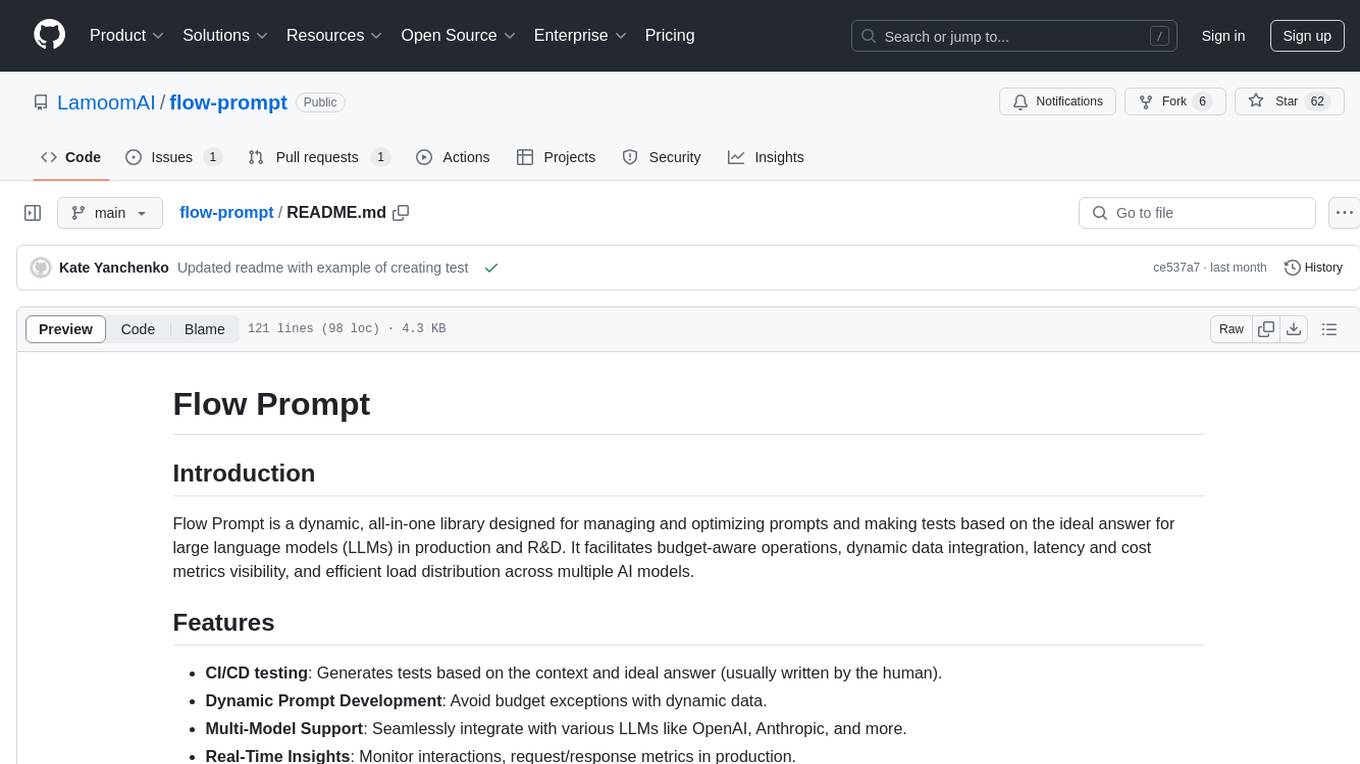
flow-prompt
Flow Prompt is a dynamic library for managing and optimizing prompts for large language models. It facilitates budget-aware operations, dynamic data integration, and efficient load distribution. Features include CI/CD testing, dynamic prompt development, multi-model support, real-time insights, and prompt testing and evolution.
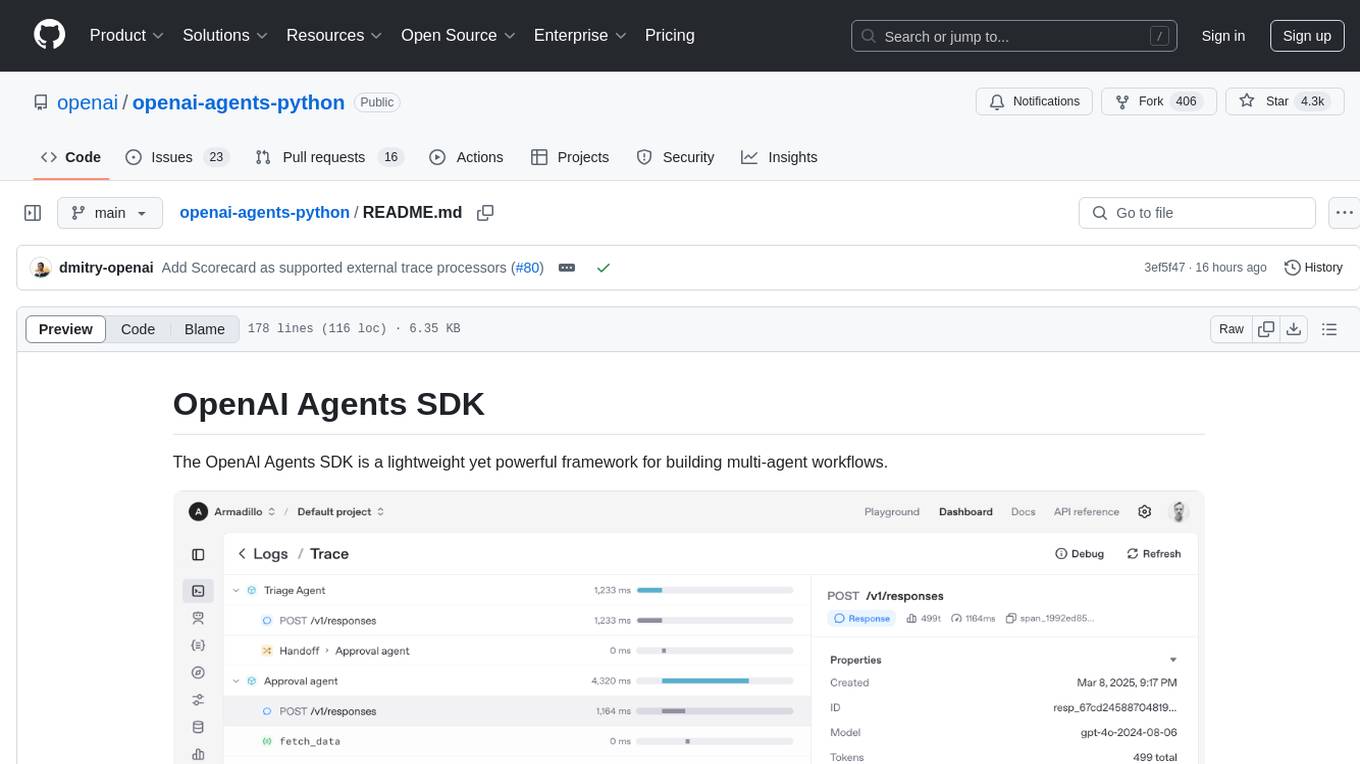
openai-agents-python
The OpenAI Agents SDK is a lightweight framework for building multi-agent workflows. It includes concepts like Agents, Handoffs, Guardrails, and Tracing to facilitate the creation and management of agents. The SDK is compatible with any model providers supporting the OpenAI Chat Completions API format. It offers flexibility in modeling various LLM workflows and provides automatic tracing for easy tracking and debugging of agent behavior. The SDK is designed for developers to create deterministic flows, iterative loops, and more complex workflows.
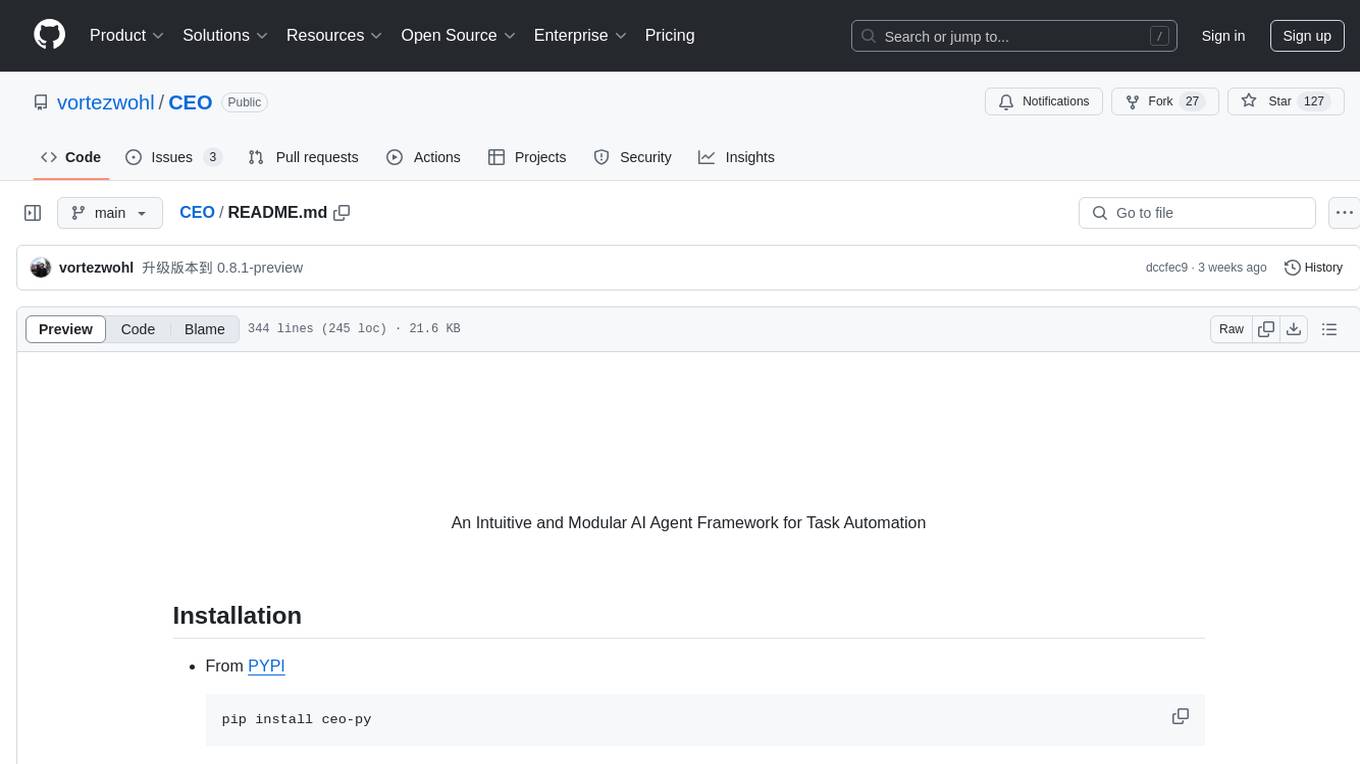
CEO
CEO is an intuitive and modular AI agent framework designed for task automation. It provides a flexible environment for building agents with specific abilities and personalities, allowing users to assign tasks and interact with the agents to automate various processes. The framework supports multi-agent collaboration scenarios and offers functionalities like instantiating agents, granting abilities, assigning queries, and executing tasks. Users can customize agent personalities and define specific abilities using decorators, making it easy to create complex automation workflows.
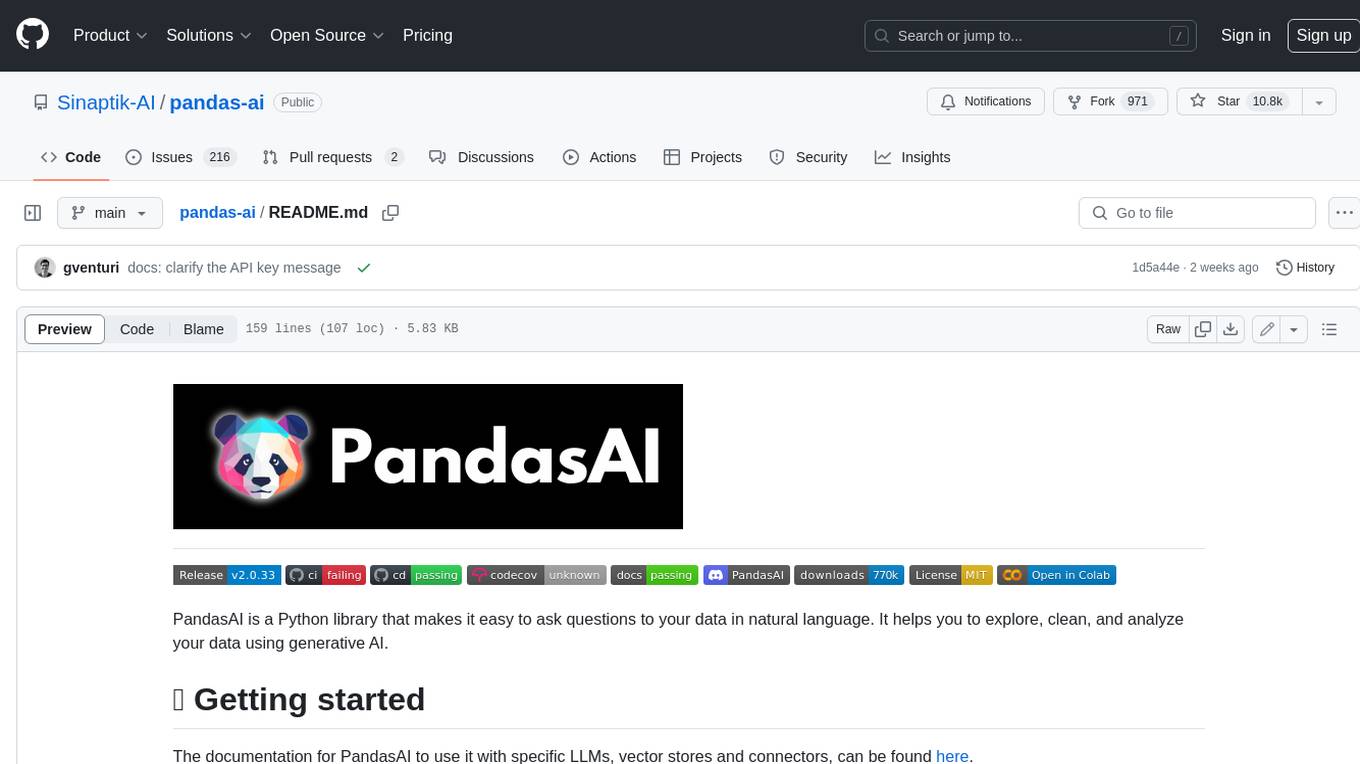
pandas-ai
PandasAI is a Python library that makes it easy to ask questions to your data in natural language. It helps you to explore, clean, and analyze your data using generative AI.

aioimaplib
aioimaplib is a Python library inspired by imaplib and imaplib2, aiming to port imaplib with asyncio for asynchronous benefits. It provides functionalities to interact with IMAP servers using asyncio, including checking mailbox, waiting for new messages, handling IDLE command, threading, IMAP command concurrency, logging configuration, and authentication with OAuth2. The library is tested with various IMAP servers like dovecot, Gmail, Outlook, Yahoo, etc. Developers are encouraged to contribute by improving, bug fixing, testing with other IMAP servers, and providing feedback. The library supports most IMAP4rev1 commands from RFC3501 and plans to implement additional commands like 'STARTTLS', 'AUTHENTICATE', 'COMPRESS', 'SETACL', 'DELETEACL', 'GETACL', 'MYRIGHTS', 'LISTRIGHTS', 'GETQUOTA', 'GETQUOTAROOT', 'SETQUOTA', 'SORT', 'THREAD', 'ID', 'NAMESPACE', 'CATENATE', and tests with other servers.

KaibanJS
KaibanJS is a JavaScript-native framework for building multi-agent AI systems. It enables users to create specialized AI agents with distinct roles and goals, manage tasks, and coordinate teams efficiently. The framework supports role-based agent design, tool integration, multiple LLMs support, robust state management, observability and monitoring features, and a real-time agentic Kanban board for visualizing AI workflows. KaibanJS aims to empower JavaScript developers with a user-friendly AI framework tailored for the JavaScript ecosystem, bridging the gap in the AI race for non-Python developers.
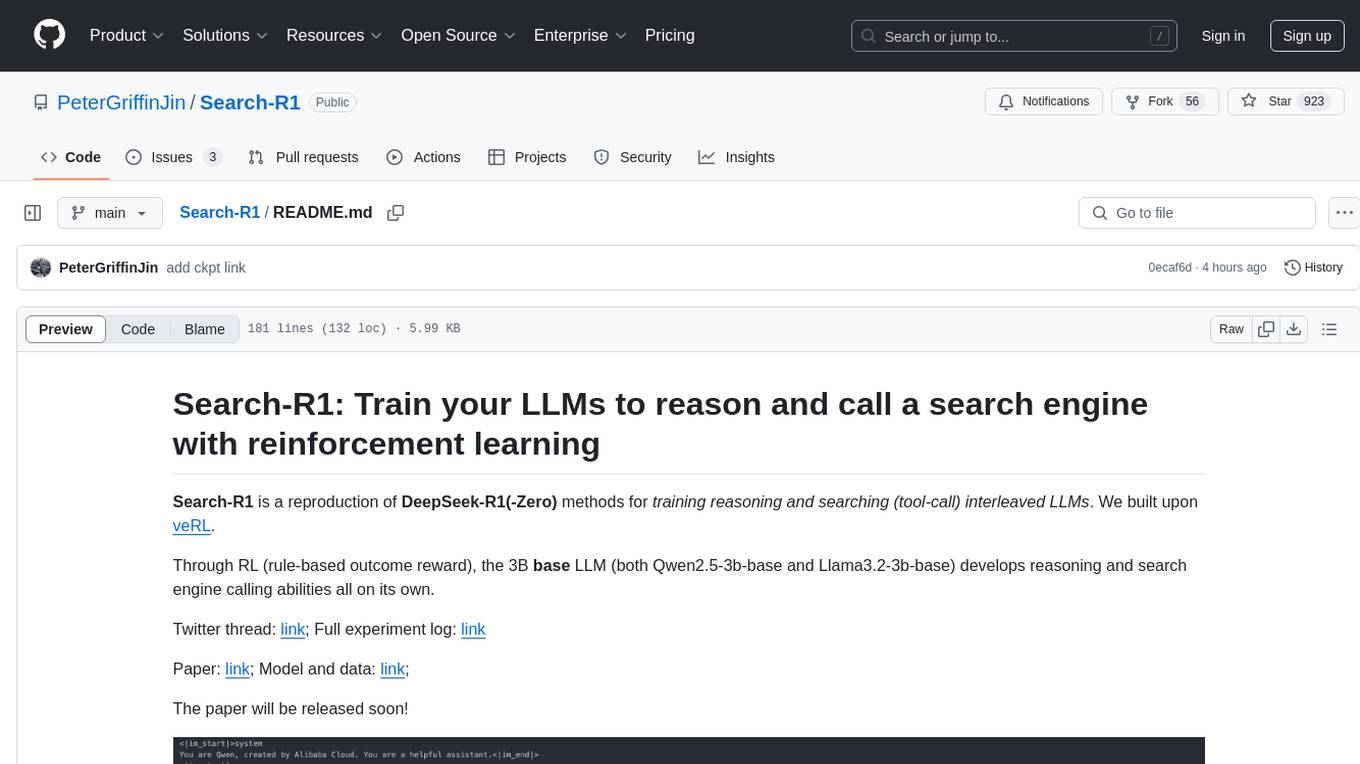
Search-R1
Search-R1 is a tool that trains large language models (LLMs) to reason and call a search engine using reinforcement learning. It is a reproduction of DeepSeek-R1 methods for training reasoning and searching interleaved LLMs, built upon veRL. Through rule-based outcome reward, the base LLM develops reasoning and search engine calling abilities independently. Users can train LLMs on their own datasets and search engines, with preliminary results showing improved performance in search engine calling and reasoning tasks.
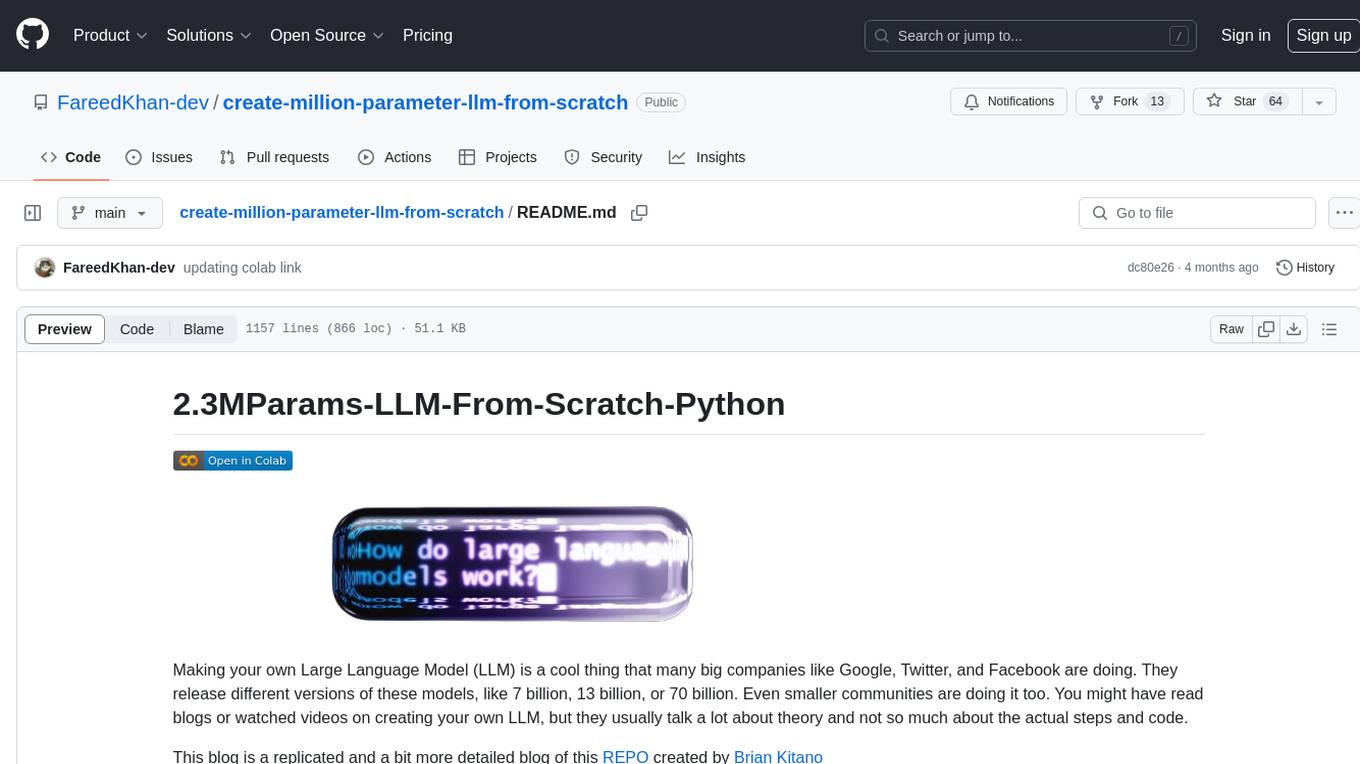
create-million-parameter-llm-from-scratch
The 'create-million-parameter-llm-from-scratch' repository provides a detailed guide on creating a Large Language Model (LLM) with 2.3 million parameters from scratch. The blog replicates the LLaMA approach, incorporating concepts like RMSNorm for pre-normalization, SwiGLU activation function, and Rotary Embeddings. The model is trained on a basic dataset to demonstrate the ease of creating a million-parameter LLM without the need for a high-end GPU.
For similar tasks

llm-baselines
LLM-baselines is a modular codebase to experiment with transformers, inspired from NanoGPT. It provides a quick and easy way to train and evaluate transformer models on a variety of datasets. The codebase is well-documented and easy to use, making it a great resource for researchers and practitioners alike.
For similar jobs
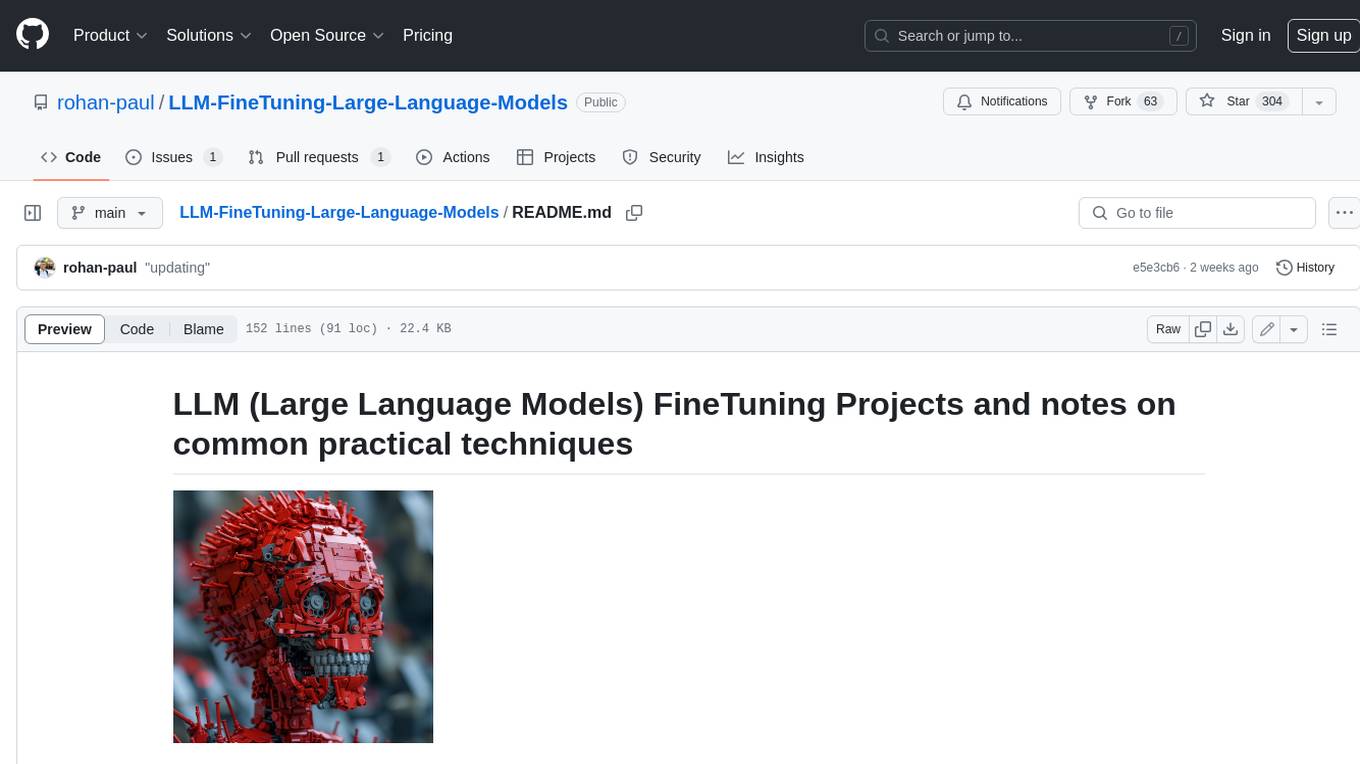
LLM-FineTuning-Large-Language-Models
This repository contains projects and notes on common practical techniques for fine-tuning Large Language Models (LLMs). It includes fine-tuning LLM notebooks, Colab links, LLM techniques and utils, and other smaller language models. The repository also provides links to YouTube videos explaining the concepts and techniques discussed in the notebooks.
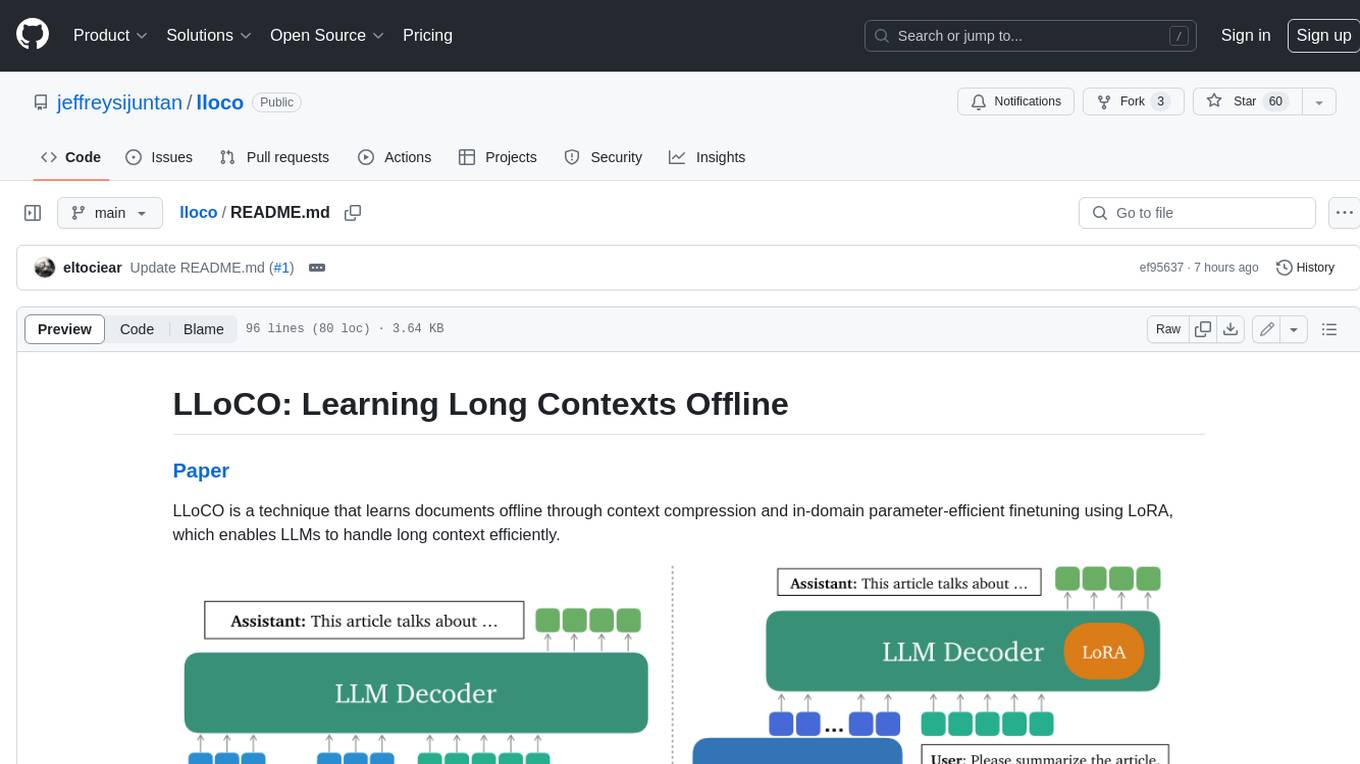
lloco
LLoCO is a technique that learns documents offline through context compression and in-domain parameter-efficient finetuning using LoRA, which enables LLMs to handle long context efficiently.
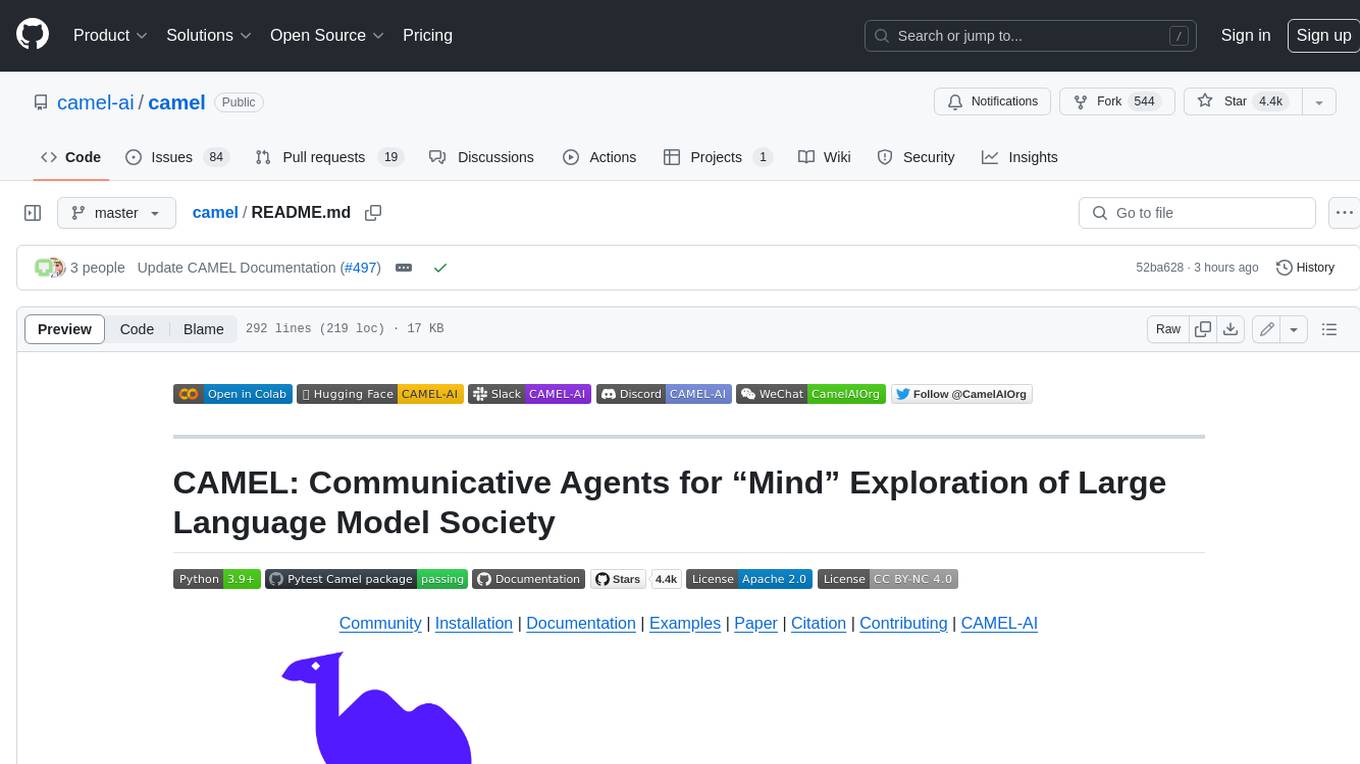
camel
CAMEL is an open-source library designed for the study of autonomous and communicative agents. We believe that studying these agents on a large scale offers valuable insights into their behaviors, capabilities, and potential risks. To facilitate research in this field, we implement and support various types of agents, tasks, prompts, models, and simulated environments.

llm-baselines
LLM-baselines is a modular codebase to experiment with transformers, inspired from NanoGPT. It provides a quick and easy way to train and evaluate transformer models on a variety of datasets. The codebase is well-documented and easy to use, making it a great resource for researchers and practitioners alike.
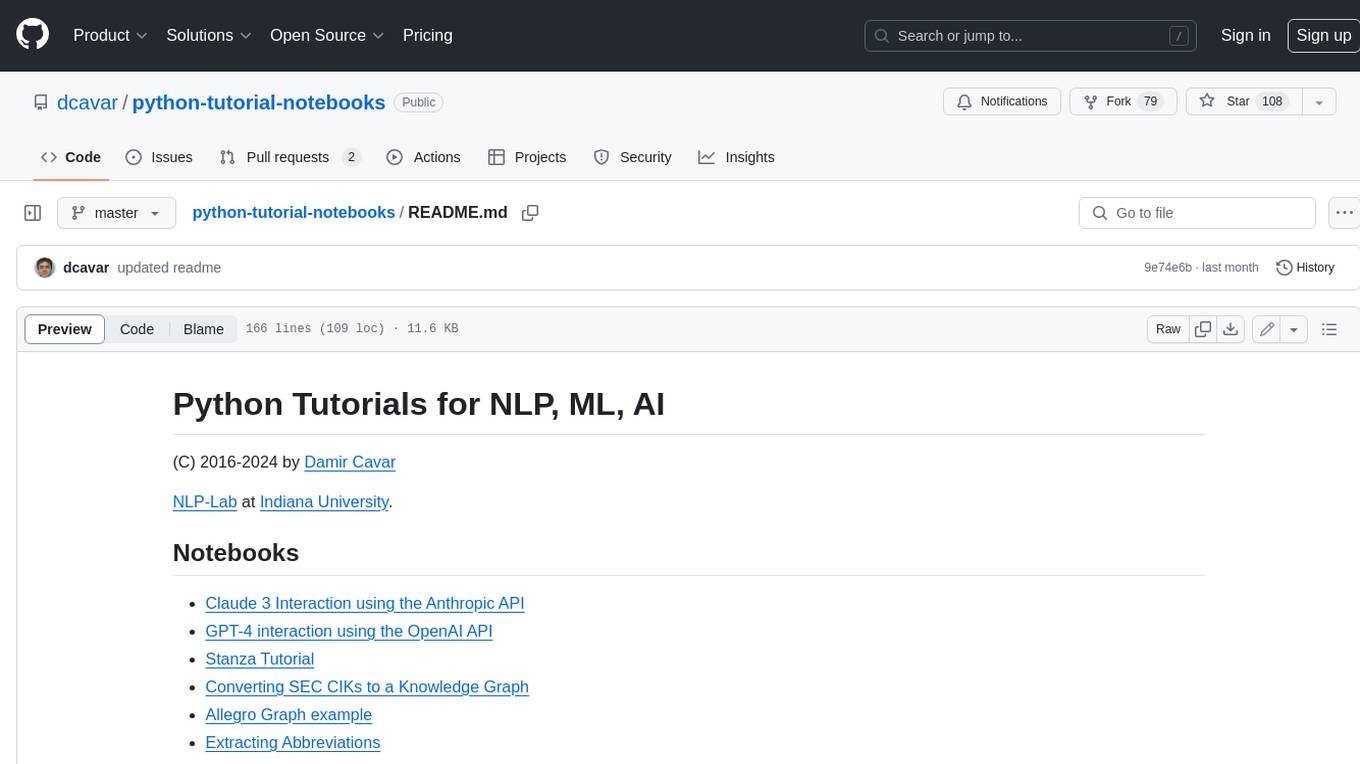
python-tutorial-notebooks
This repository contains Jupyter-based tutorials for NLP, ML, AI in Python for classes in Computational Linguistics, Natural Language Processing (NLP), Machine Learning (ML), and Artificial Intelligence (AI) at Indiana University.
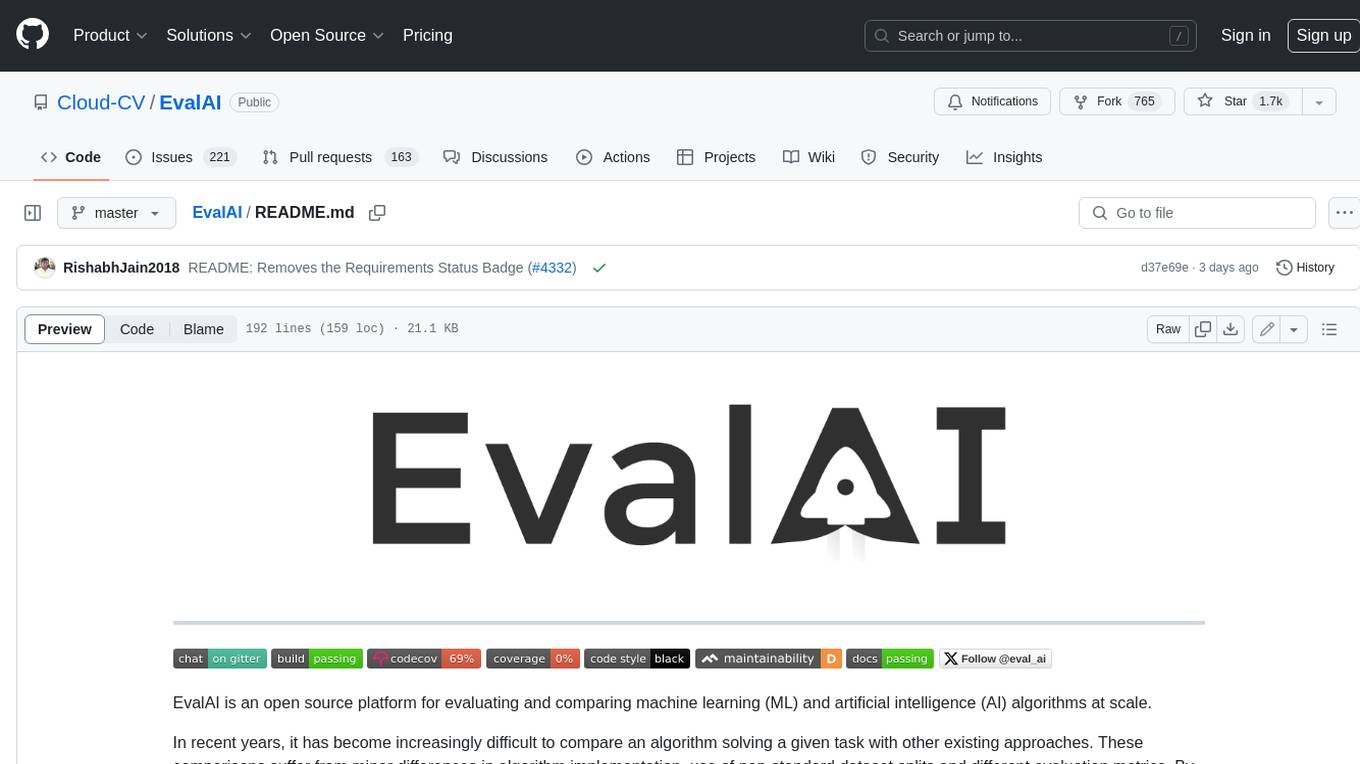
EvalAI
EvalAI is an open-source platform for evaluating and comparing machine learning (ML) and artificial intelligence (AI) algorithms at scale. It provides a central leaderboard and submission interface, making it easier for researchers to reproduce results mentioned in papers and perform reliable & accurate quantitative analysis. EvalAI also offers features such as custom evaluation protocols and phases, remote evaluation, evaluation inside environments, CLI support, portability, and faster evaluation.
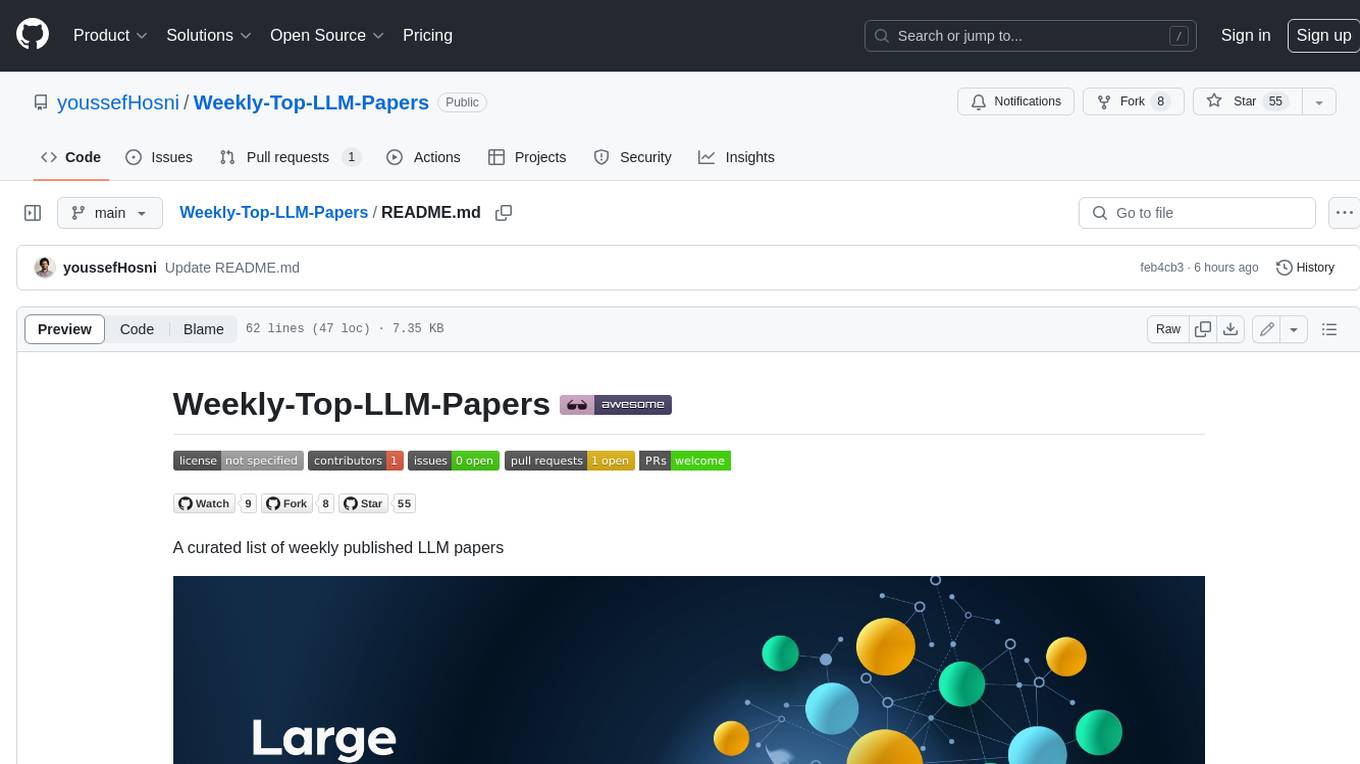
Weekly-Top-LLM-Papers
This repository provides a curated list of weekly published Large Language Model (LLM) papers. It includes top important LLM papers for each week, organized by month and year. The papers are categorized into different time periods, making it easy to find the most recent and relevant research in the field of LLM.

self-llm
This project is a Chinese tutorial for domestic beginners based on the AutoDL platform, providing full-process guidance for various open-source large models, including environment configuration, local deployment, and efficient fine-tuning. It simplifies the deployment, use, and application process of open-source large models, enabling more ordinary students and researchers to better use open-source large models and helping open and free large models integrate into the lives of ordinary learners faster.

